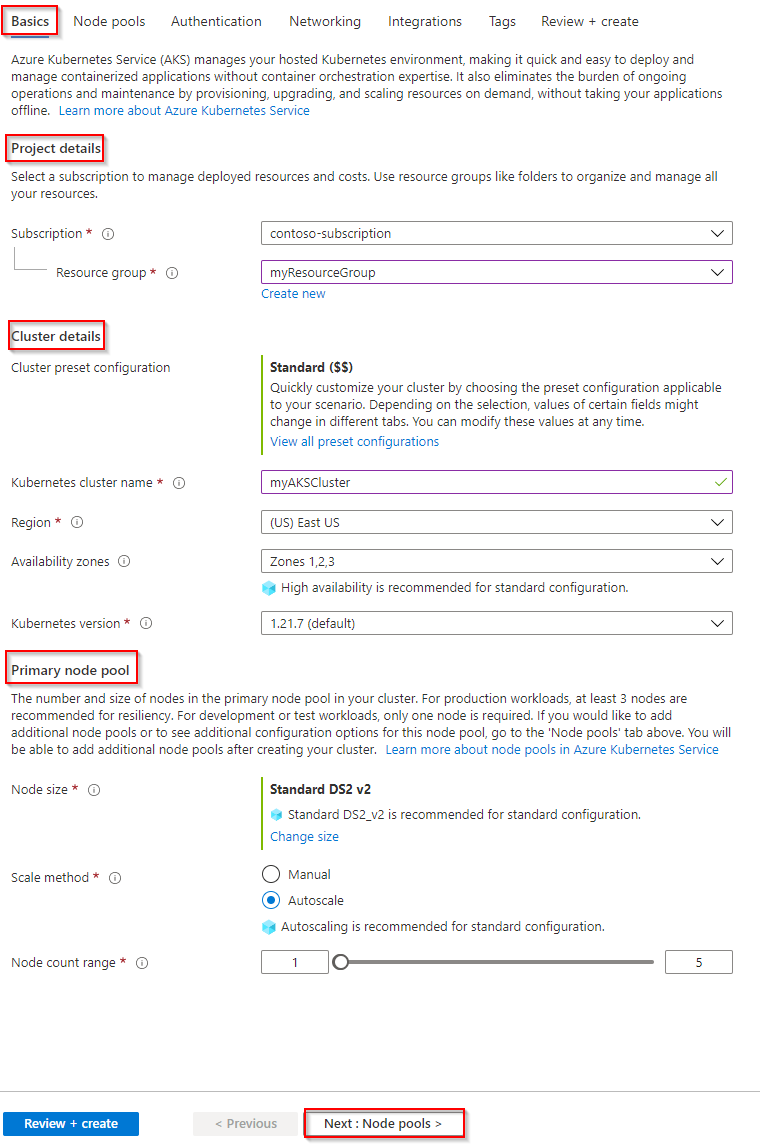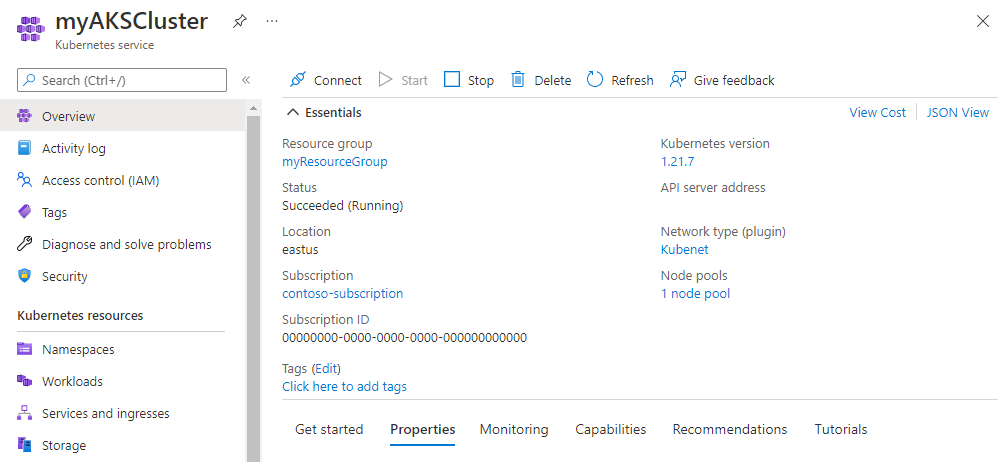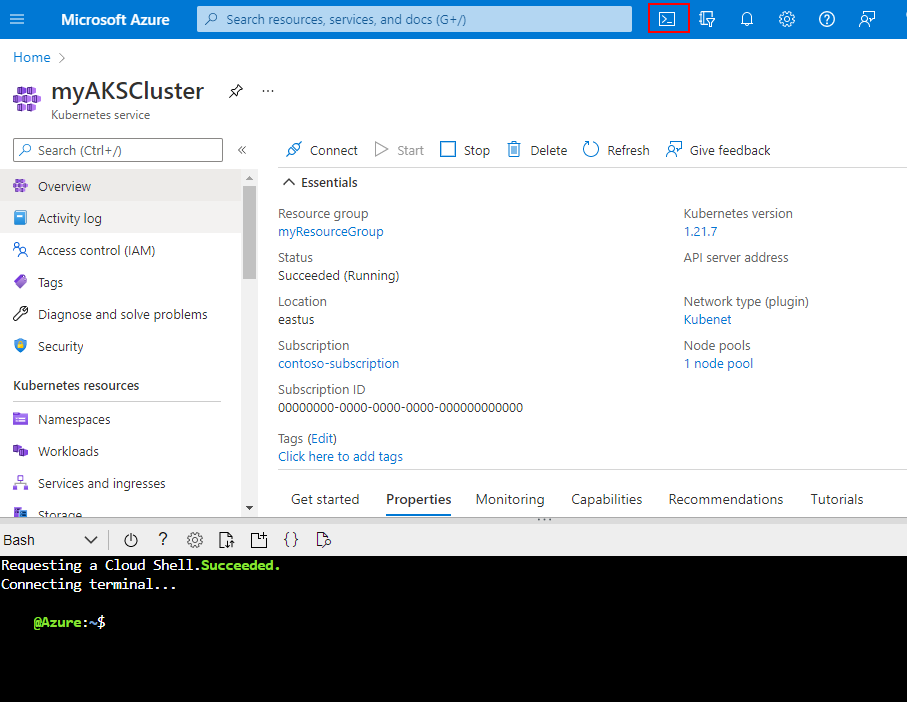Deploying an AKS cluster using the Azure portal
Here you’ll learn AKS, Azure Kubernetes Service is a managed Kubernetes service that allows you to quickly deploy and manage clusters. On this page, you deploy an AKS cluster with the help of the Azure portal. A multi-container application that incorporates a web front end and a Redis instance. So, let’s begin.
Signing in to Azure
First of all, sign in to the Azure portal at https://portal.azure.com.
Creating an AKS cluster
In order to create an AKS cluster, follow these steps:

- First of all, select Create a resource.
- Secondly, select Containers > Kubernetes Service.
- Now, configure the following possibilities:
- Project details: Select an Azure Subscription, then create an Azure Resource group.
- Cluster details: Enter a Kubernetes cluster name, and later select a Region, Kubernetes version, and DNS name prefix for the AKS cluster.
- Primary node pool: Select a VM Node size for the AKS nodes.
- Click Next: Scale when complete.
- At the bottom of the screen, click Next: Authentication.
- On the Authentication page, do the following steps:
- Creating a new service principal by leaving the Service Principal field with a (new) default service principal.
- Enabling the option for Kubernetes role-based access control (RBAC).

By default, Basic networking is required, and Azure Monitor for containers is enabled. After then, click Review + create and then Create when validation completes.
Connecting to the AKS cluster
To maintain a Kubernetes cluster, use kubectl, the Kubernetes command-line client. The kubectl the client is pre-installed in the Azure Cloud Shell.
Open Cloud Shell using the >_ button on the top of the Azure portal.

Running the application
A Kubernetes manifest file describes the desired state for the cluster. This includes two Kubernetes deployments – one for the sample Azure Vote Python applications. Also, two Kubernetes Services are created – an internal service for the Redis instance. And external service to reach the Azure Vote application from the internet.

Reference: Microsoft Documentation

